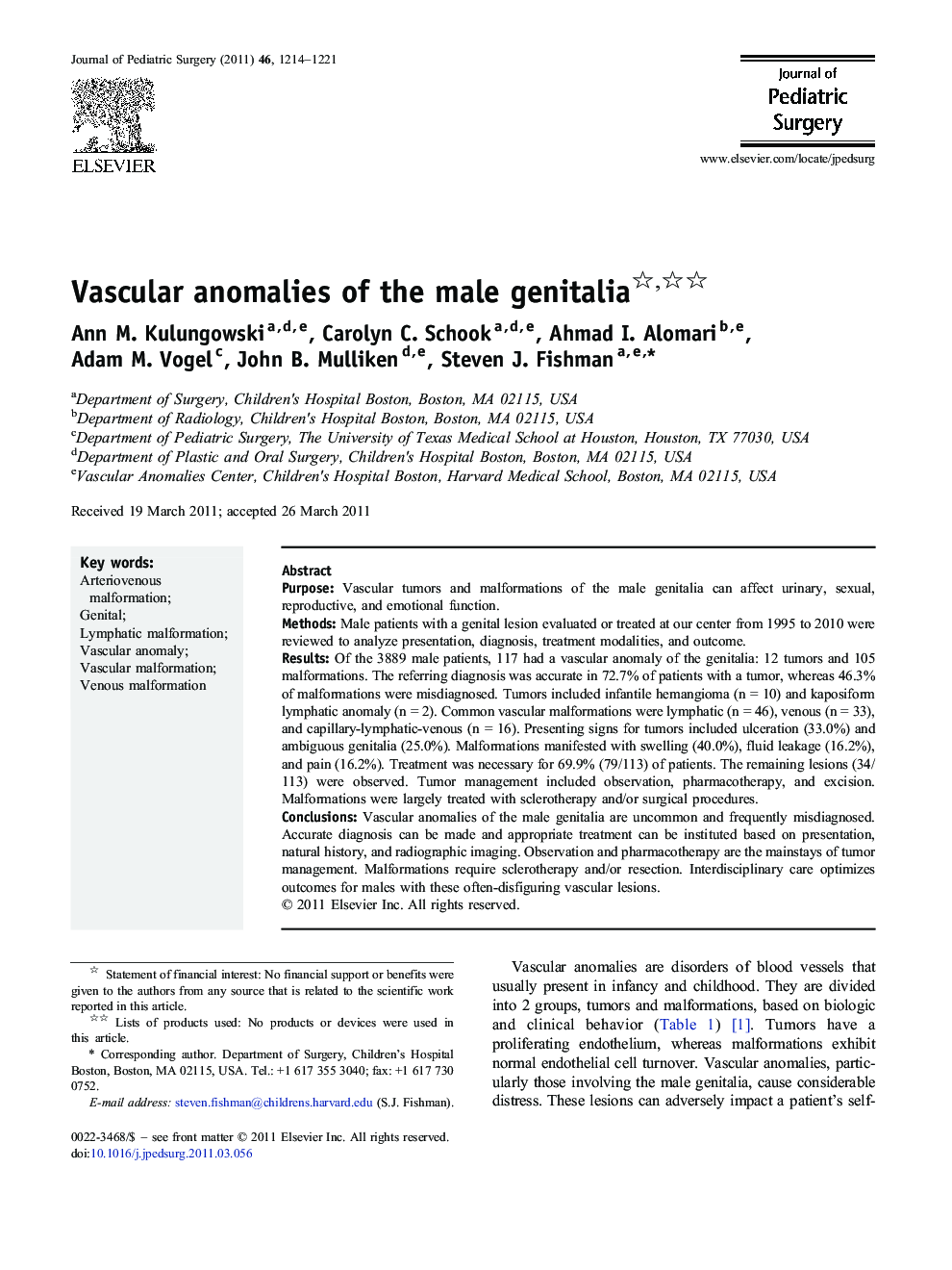| Article ID | Journal | Published Year | Pages | File Type |
|---|---|---|---|---|
| 4157099 | Journal of Pediatric Surgery | 2011 | 8 Pages |
PurposeVascular tumors and malformations of the male genitalia can affect urinary, sexual, reproductive, and emotional function.MethodsMale patients with a genital lesion evaluated or treated at our center from 1995 to 2010 were reviewed to analyze presentation, diagnosis, treatment modalities, and outcome.ResultsOf the 3889 male patients, 117 had a vascular anomaly of the genitalia: 12 tumors and 105 malformations. The referring diagnosis was accurate in 72.7% of patients with a tumor, whereas 46.3% of malformations were misdiagnosed. Tumors included infantile hemangioma (n = 10) and kaposiform lymphatic anomaly (n = 2). Common vascular malformations were lymphatic (n = 46), venous (n = 33), and capillary-lymphatic-venous (n = 16). Presenting signs for tumors included ulceration (33.0%) and ambiguous genitalia (25.0%). Malformations manifested with swelling (40.0%), fluid leakage (16.2%), and pain (16.2%). Treatment was necessary for 69.9% (79/113) of patients. The remaining lesions (34/113) were observed. Tumor management included observation, pharmacotherapy, and excision. Malformations were largely treated with sclerotherapy and/or surgical procedures.ConclusionsVascular anomalies of the male genitalia are uncommon and frequently misdiagnosed. Accurate diagnosis can be made and appropriate treatment can be instituted based on presentation, natural history, and radiographic imaging. Observation and pharmacotherapy are the mainstays of tumor management. Malformations require sclerotherapy and/or resection. Interdisciplinary care optimizes outcomes for males with these often-disfiguring vascular lesions.
